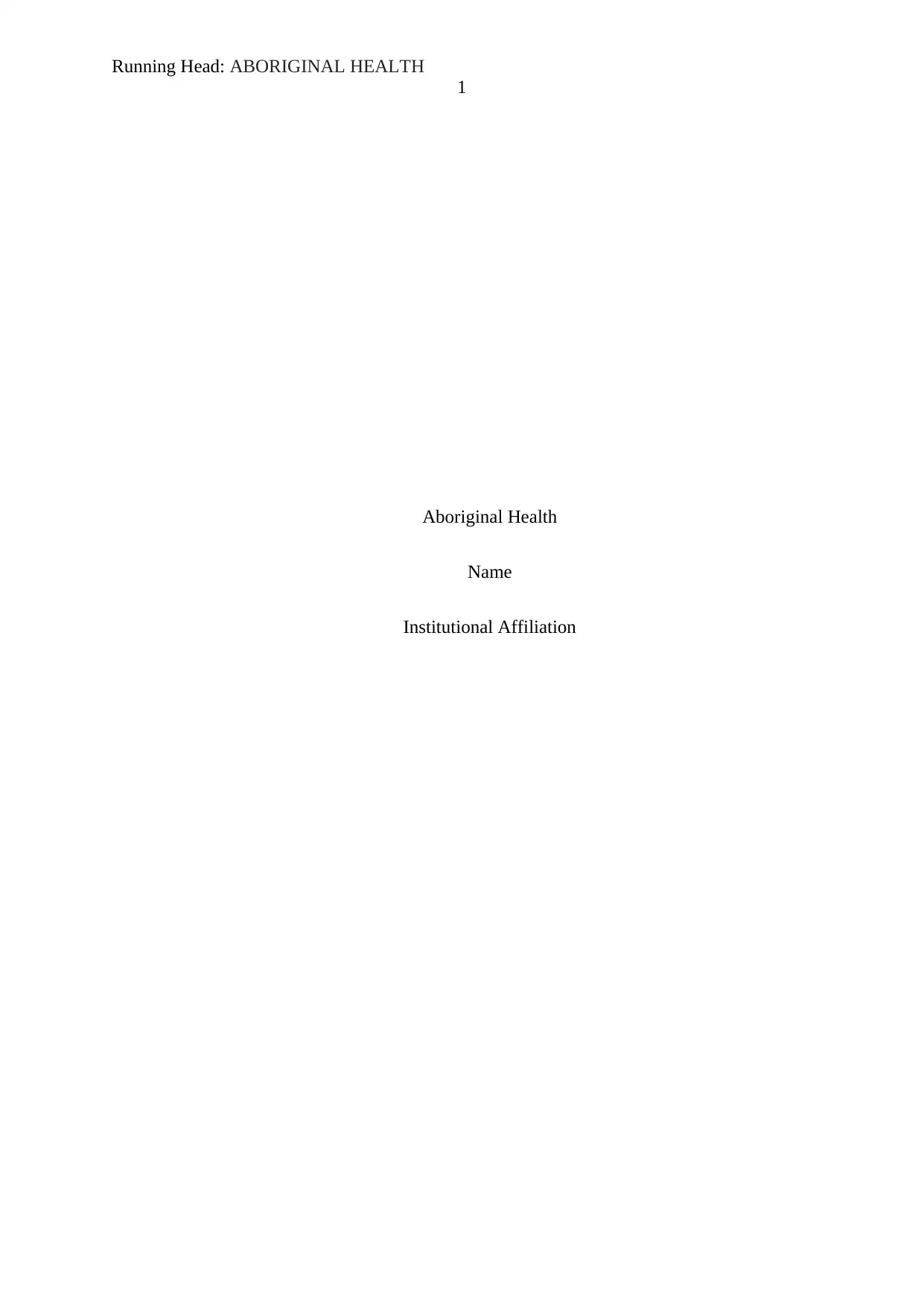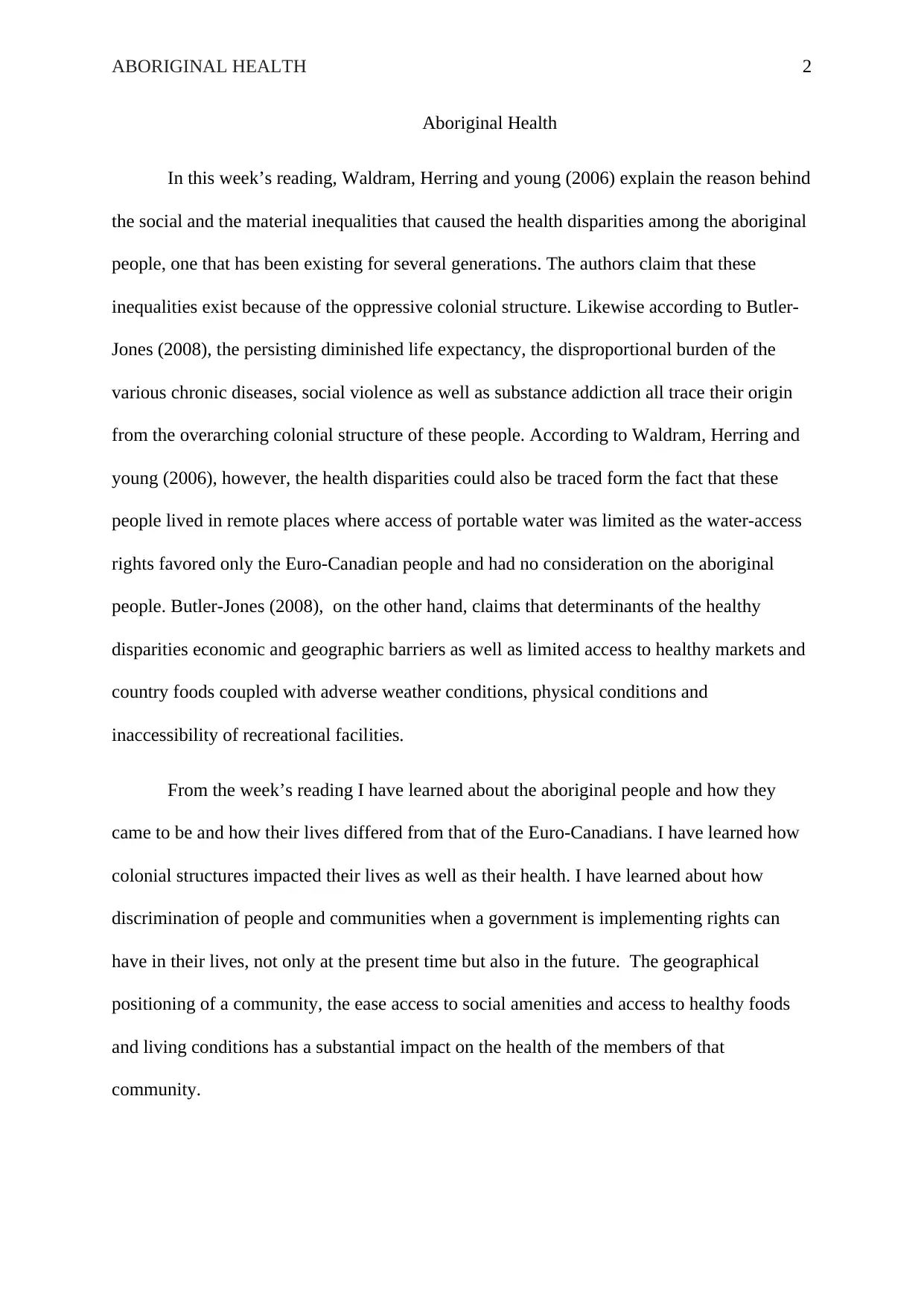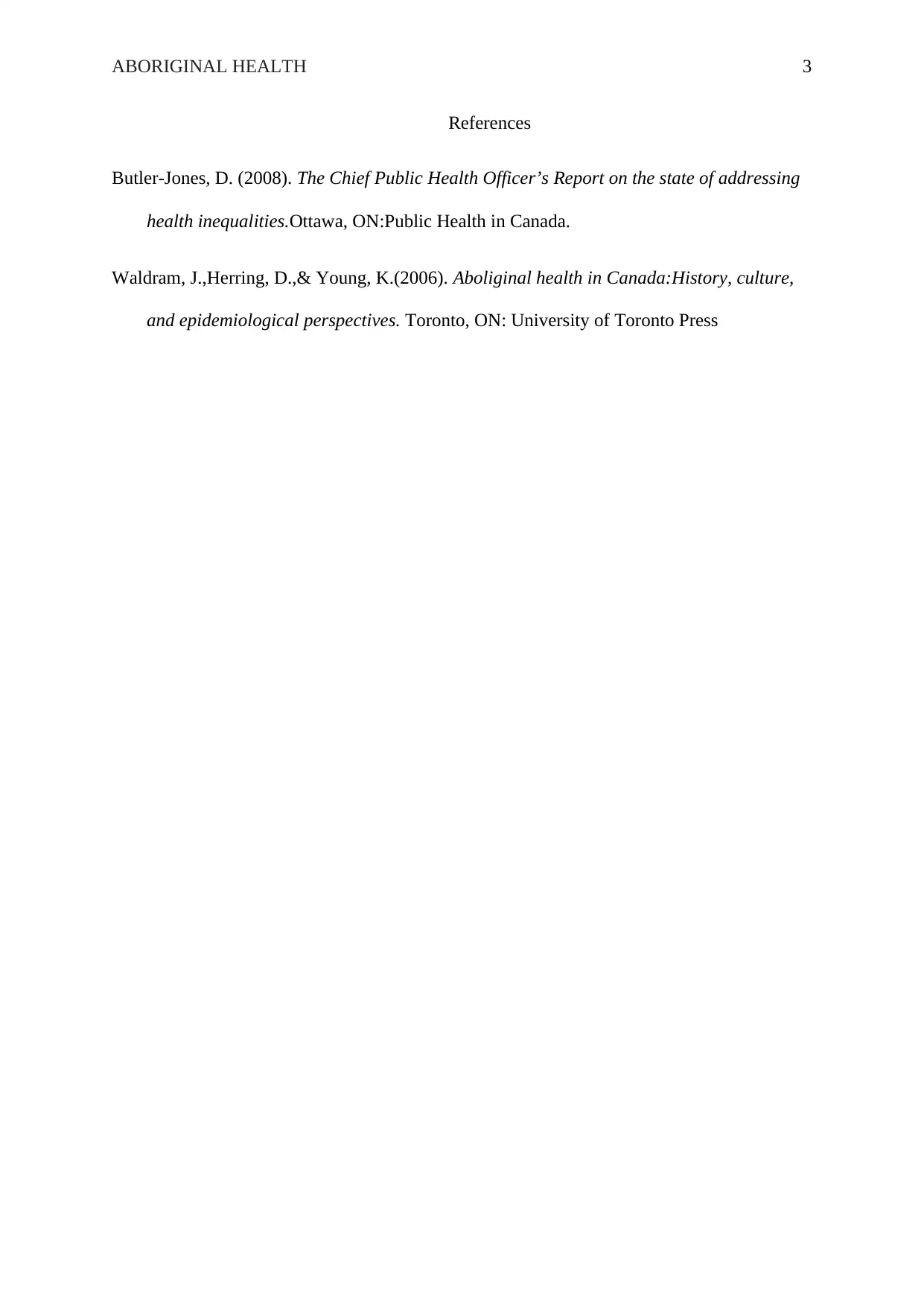Aboriginal Health: Health Disparities, Colonialism, and Social Impact
VerifiedAdded on 2020/04/07
|3
|400
|184
Report
AI Summary
This report examines the health disparities among Aboriginal people, emphasizing the role of colonial structures and their impact on health outcomes. It references Waldram, Herring, and Young (2006), and Butler-Jones (2008) to highlight how colonial policies and practices have contributed to these inequalities. The report discusses how limited access to resources, such as clean water and healthy foods, along with geographical barriers and adverse weather conditions, further exacerbate these health challenges. The assignment underscores the importance of understanding the historical and social contexts that shape Aboriginal health, and how government policies and community access to amenities play a significant role in determining overall health and well-being. It also highlights the need for addressing the systemic issues that lead to these health disparities.
1 out of 3






![[object Object]](/_next/static/media/star-bottom.7253800d.svg)